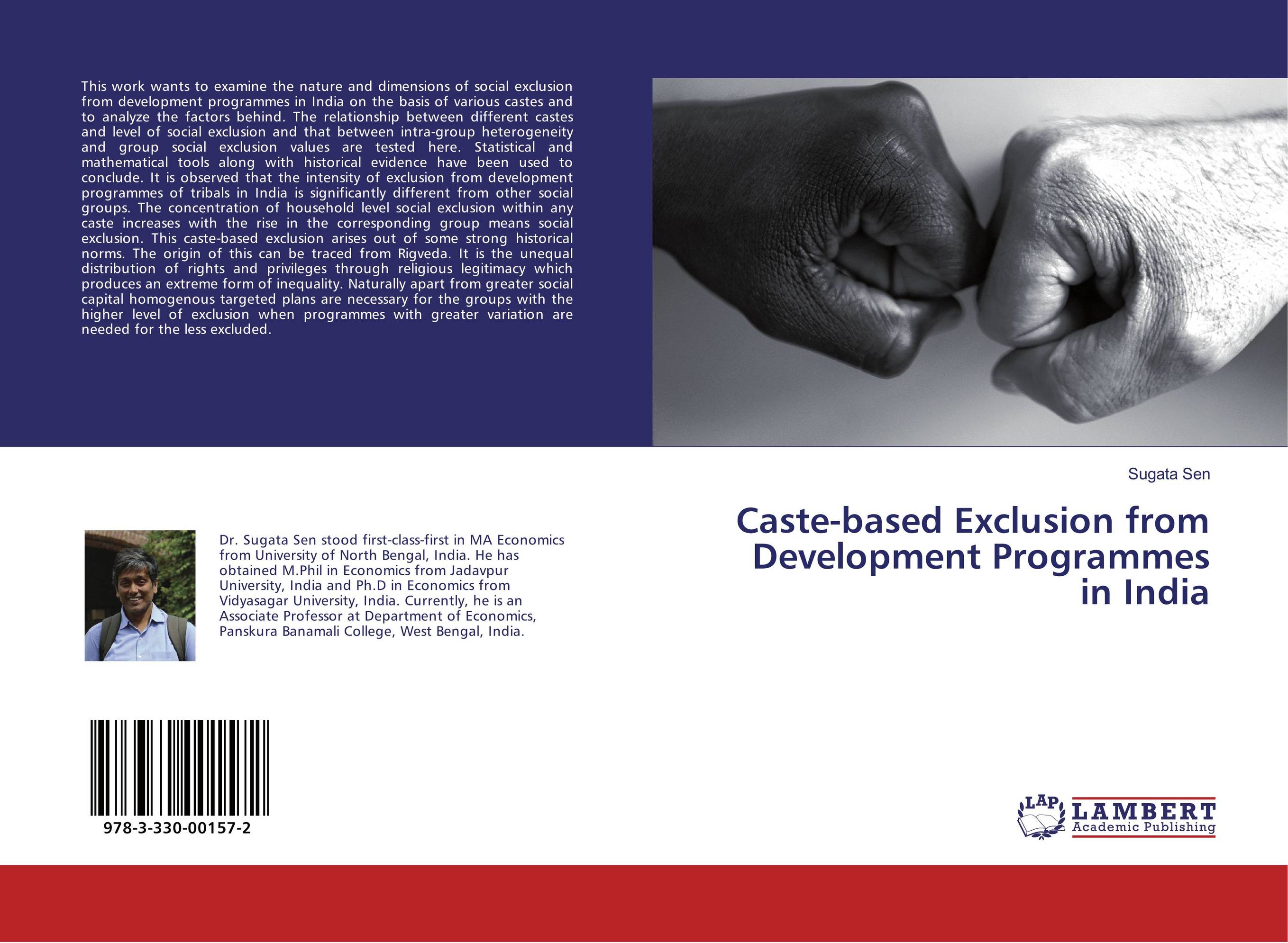| Поиск по каталогу |
|
(строгое соответствие)
|
- Профессиональная
- Научно-популярная
- Художественная
- Публицистика
- Детская
- Искусство
- Хобби, семья, дом
- Спорт
- Путеводители
- Блокноты, тетради, открытки
Caste-based Exclusion from Development Programmes in India.

В наличии
| Местонахождение: Алматы | Состояние экземпляра: новый |

Бумажная
версия
версия
Автор: Sugata Sen
ISBN: 9783330001572
Год издания: 2017
Формат книги: 60×90/16 (145×215 мм)
Количество страниц: 64
Издательство: LAP LAMBERT Academic Publishing
Цена: 21414 тг
Положить в корзину
| Способы доставки в город Алматы * комплектация (срок до отгрузки) не более 2 рабочих дней |
| Самовывоз из города Алматы (пункты самовывоза партнёра CDEK) |
| Курьерская доставка CDEK из города Москва |
| Доставка Почтой России из города Москва |
Аннотация: This work wants to examine the nature and dimensions of social exclusion from development programmes in India on the basis of various castes and to analyze the factors behind. The relationship between different castes and level of social exclusion and that between intra-group heterogeneity and group social exclusion values are tested here. Statistical and mathematical tools along with historical evidence have been used to conclude. It is observed that the intensity of exclusion from development programmes of tribals in India is significantly different from other social groups. The concentration of household level social exclusion within any caste increases with the rise in the corresponding group means social exclusion. This caste-based exclusion arises out of some strong historical norms. The origin of this can be traced from Rigveda. It is the unequal distribution of rights and privileges through religious legitimacy which produces an extreme form of inequality. Naturally apart from greater social capital homogenous targeted plans are necessary for the groups with the higher level of exclusion when programmes with greater variation are needed for the less excluded.
Ключевые слова: social exclusion, Statistical significance, caste-based exclusion, adverse inclusion, castes and tribes, Exclusion Index, Generalised Entropy Index, Degree of Heterogeneity, Hindu Social Order, Exclusion inclusion continuum



